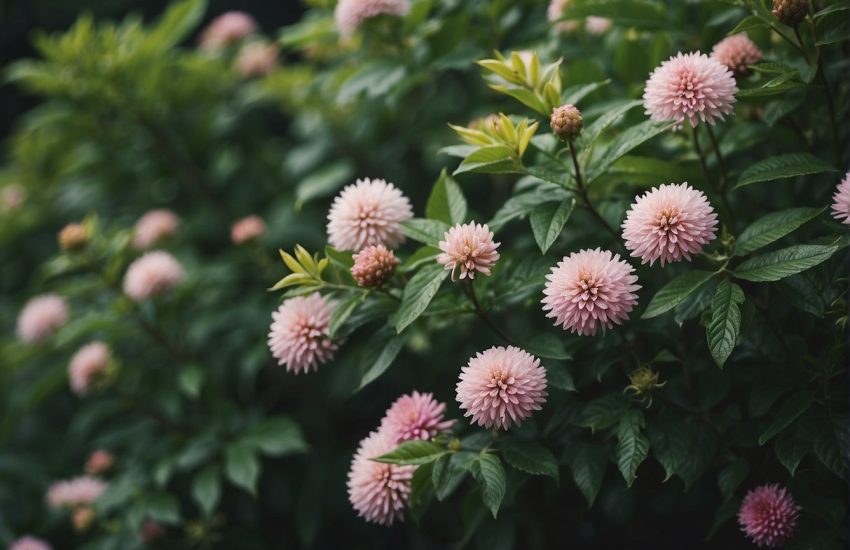Stachys Byzantina Lamb’s Ear: Characteristics and Care Tips
Stachys byzantina, commonly known as Lamb’s Ear, is a popular perennial herbaceous plant that is native to Turkey, Iran, and Armenia. It is named after its soft and fuzzy, silver-green leaves that resemble the ears of a lamb. Lamb’s Ear is a member of the mint family and is known for its medicinal properties, as well as its ornamental value in gardens.
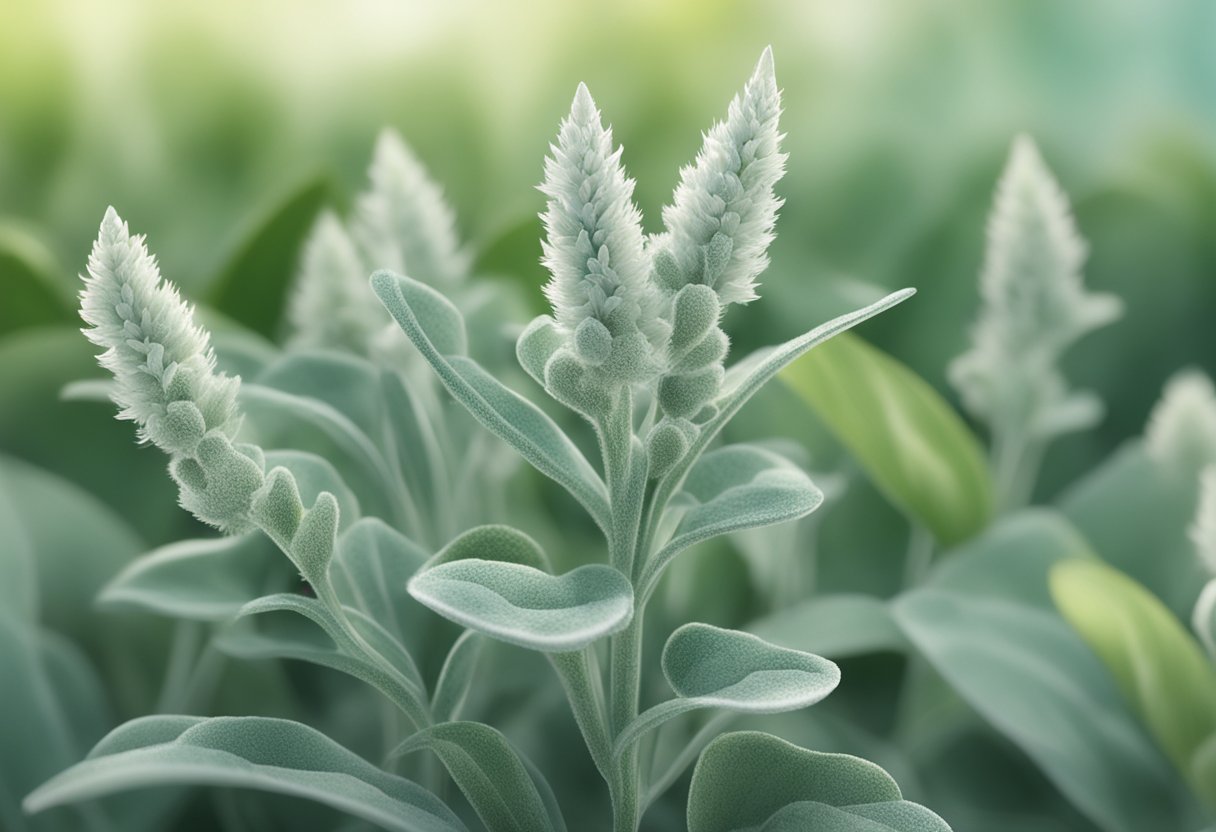
The leaves of Stachys byzantina are covered in tiny hairs that give them a velvety texture and help to protect the plant from excessive heat and moisture loss. The plant produces small, pink or purple flowers on tall spikes in the summer months, which attract bees and other pollinators to the garden. Lamb’s Ear is a hardy plant that can grow in a variety of soil types and is resistant to pests and diseases, making it a popular choice for gardeners of all skill levels.
Whether used as a ground cover, border plant, or in mixed perennial beds, Stachys byzantina Lamb’s Ear is a versatile and attractive addition to any garden. Its unique texture and color add interest and contrast to other plants, while its low maintenance requirements make it an easy choice for busy gardeners. With its long history of medicinal use and its many practical and aesthetic benefits, Lamb’s Ear is sure to remain a popular choice for years to come.
Botanical Profile
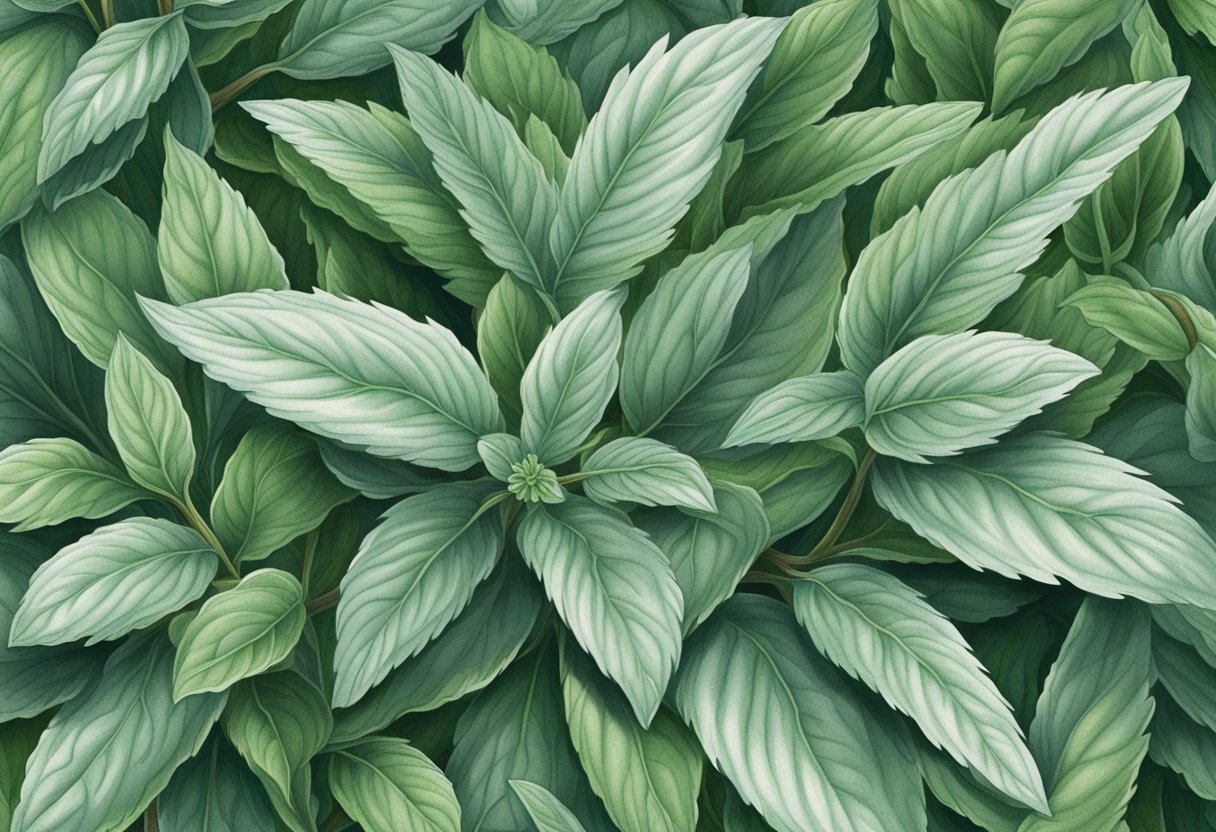
Taxonomy
Stachys byzantina, commonly known as lamb’s ear, is a member of the Lamiaceae family, also known as the mint family. The genus Stachys contains over 300 species of herbaceous perennials, many of which are grown for their ornamental value. The specific epithet “byzantina” refers to the plant’s native range in the eastern Mediterranean region, including Turkey and Iran.
Physical Characteristics
Lamb’s ear is a soft, velvety, and woolly evergreen perennial that typically grows to a height of 30-45 cm. The plant produces a basal rosette of leaves that are oblong or elliptic in shape and are covered in dense, silvery-white hairs that give them a fuzzy appearance. The leaves are typically 5-15 cm long and 2-8 cm wide, with serrated edges. The plant produces spikes of pink or purple flowers that bloom in late spring or early summer.
Lamb’s ear is a popular ornamental plant in gardens and landscapes due to its attractive foliage and low maintenance requirements. The plant prefers well-drained soil and full sun to partial shade. It is drought tolerant and can be propagated by division or by taking stem cuttings. Lamb’s ear is also used in traditional medicine for its anti-inflammatory and antiseptic properties.
Growth and Planting
Stachys byzantina, commonly known as Lamb’s Ear, is a hardy and low-maintenance perennial plant that is native to Turkey, Iran, and Armenia. This plant is widely grown in gardens for its unique foliage and attractive flowers.
Cultivation Requirements
Lamb’s Ear prefers full sun to partial shade and well-drained soil. It can tolerate drought and is not fussy about soil pH. However, it does not grow well in wet or poorly drained soils.
Planting Techniques
To plant Lamb’s Ear, prepare the soil by removing any weeds and debris. Dig a hole slightly larger than the root ball and place the plant in the hole. Backfill with soil and gently firm the soil around the plant. Water thoroughly after planting.
Propagation Methods
Lamb’s Ear can be propagated by seeds or division. Seeds can be sown in spring, but it may take several years for the plant to mature. Division is a quicker and more reliable method of propagation. Divide the plant in spring or fall by digging up the clump and separating it into smaller sections. Replant the sections and water thoroughly.
Overall, Lamb’s Ear is an excellent addition to any garden due to its low maintenance and unique appearance. With proper care and planting techniques, it can thrive in a variety of climates and soil conditions.
Care and Maintenance
Water and Humidity
Stachys byzantina, commonly known as Lamb’s Ear, prefers well-draining soil and does not tolerate wet feet. Overwatering can lead to root rot, so it’s essential to water only when the top inch of soil is dry. During hot and dry weather, it may require more frequent watering to prevent the leaves from wilting. Lamb’s Ear is drought-tolerant, making it an excellent plant for those who live in arid regions.
Soil and Fertilization
Lamb’s Ear prefers well-draining soil that is slightly alkaline with a pH between 6.0 and 7.5. It can tolerate poor soil but thrives in fertile soil. It’s recommended to add compost or other organic matter to the soil before planting. Fertilization is not necessary, but a balanced fertilizer can be applied in the spring to promote healthy growth.
Pruning and Deadheading
Lamb’s Ear is a low-maintenance plant that doesn’t require much pruning. However, removing spent flowers can encourage more blooms. Deadheading can be done by pinching off the spent flowers or cutting the entire flower stalk. Pruning can be done in the spring to remove any damaged or dead leaves.
Overall, Lamb’s Ear is an easy-to-grow plant that requires minimal care. Mulching can help retain moisture and suppress weeds. Compost can be added to the soil to improve fertility. By following these care and maintenance tips, Lamb’s Ear can provide a beautiful and textural addition to any garden.
Garden and Landscape Use
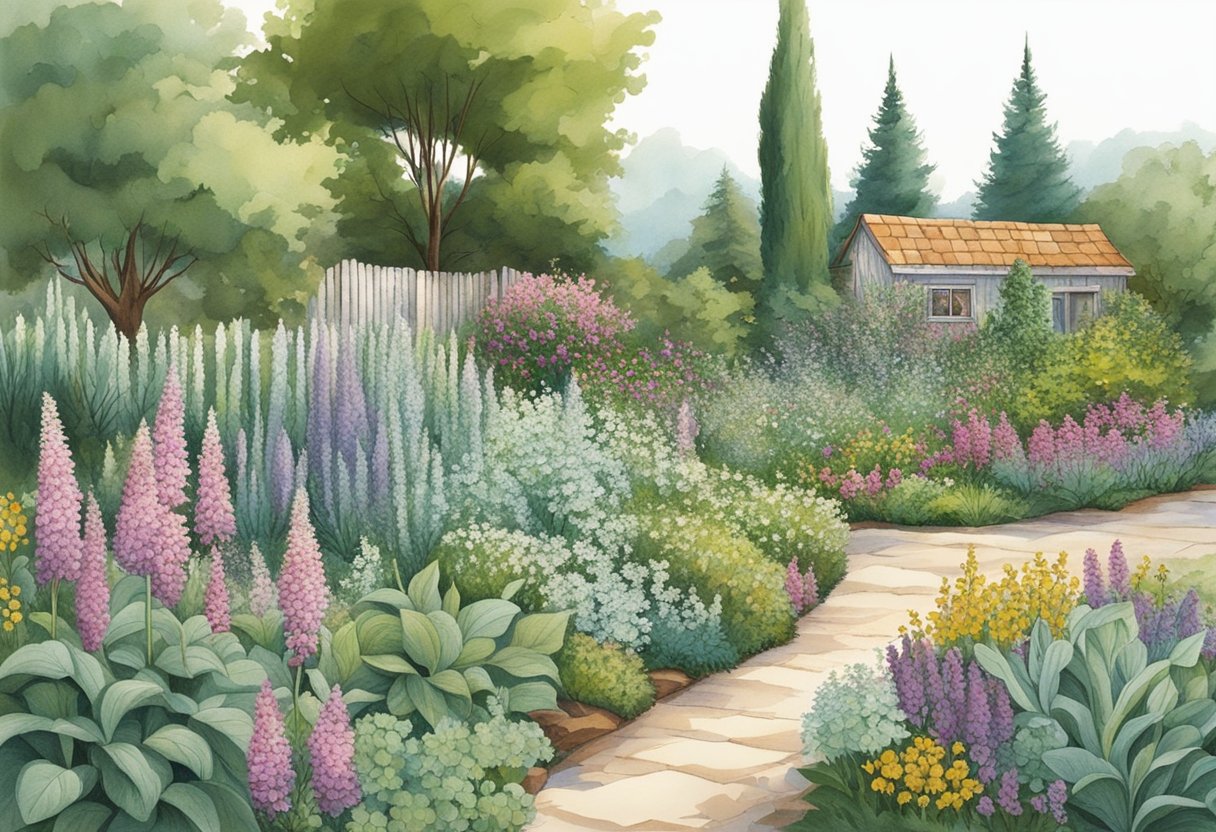
Design and Aesthetic
Stachys byzantina, commonly known as Lamb’s Ear, is a popular choice for gardeners and landscapers due to its unique and attractive appearance. The plant’s soft, velvety leaves add a touch of texture to any garden and its silvery foliage provides a beautiful contrast against other greenery. Lamb’s Ear is often used as a ground cover, particularly in rock gardens, where it can grow to cover large areas and create a uniform, carpet-like effect.
Companion Plants
Lamb’s Ear also works well as a companion plant, as its soft texture and silvery color can complement a variety of other plants. It pairs well with darker foliage, such as purple or burgundy, and can also be used to soften the look of spiky plants like yucca or agave. In a sensory garden, Lamb’s Ear can add a tactile element, as its leaves are soft and fuzzy to the touch.
Overall, Lamb’s Ear is a versatile plant that can be used in a variety of garden and landscape settings. It is particularly well-suited for rock gardens and borders, where its texture and color can be highlighted against a backdrop of stones or other plants. It also works well in containers, where its soft leaves can spill over the edges and create a cascading effect.
Reproduction and Cultivars

Varieties and Selection
Stachys byzantina, commonly known as Lamb’s Ear, is a popular herbaceous perennial that is native to Turkey, Armenia, and Iran. It is known for its soft, silvery leaves that resemble the ears of a lamb. There are several cultivars of Lamb’s Ear available in the market, each with its unique characteristics.
One of the most popular cultivars of Lamb’s Ear is the ‘Silver Carpet’. As the name suggests, this variety features a dense carpet of silvery leaves that can spread up to 2 feet wide. Another popular cultivar is the ‘Big Ears’, which has larger leaves than the standard Lamb’s Ear.
Breeding and Hybridization
Lamb’s Ear is a relatively easy plant to propagate. It can be grown from seeds or cuttings. However, breeding and hybridization have led to the development of many new cultivars with different leaf shapes, sizes, and colors.
One of the most notable hybrid cultivars of Lamb’s Ear is the ‘Helene von Stein’, which is a cross between Stachys byzantina and Stachys macrantha. This cultivar has larger leaves than the standard Lamb’s Ear and is known for its tolerance to heat and humidity.
Overall, Lamb’s Ear is a versatile and low-maintenance plant that can be grown in a variety of settings. Its soft, silvery leaves make it an excellent choice for borders, groundcovers, and rock gardens. With the availability of several cultivars, there is a Lamb’s Ear variety suitable for almost any garden.
Pests and Diseases

Common Issues
Stachys byzantina, commonly known as lamb’s ear, is a hardy perennial that is generally disease-resistant and pest-free. However, like all plants, it may occasionally fall prey to various issues. The following are some of the most common problems that may affect lamb’s ear:
- Root Rot: Overwatering or poor drainage can cause root rot in lamb’s ear. Symptoms include wilting, yellowing leaves, and stunted growth. To prevent this issue, ensure that the soil is well-draining and do not overwater the plant.
- Fungal Diseases: Lamb’s ear is susceptible to various fungal diseases, including powdery mildew and rust. These diseases can cause discolored leaves, distorted growth, and premature leaf drop. To prevent fungal diseases, ensure that the plant is grown in well-draining soil and has good air circulation. If necessary, apply a fungicide to the affected plant parts.
Prevention and Treatment
Preventing and treating pests and diseases in lamb’s ear is relatively easy. Here are some tips:
- Ensure that the plant is grown in well-draining soil and has good air circulation.
- Avoid overwatering the plant, as this can cause root rot.
- Apply a fungicide to the affected plant parts if necessary. Be sure to follow the manufacturer’s instructions carefully.
- If deer are a problem in your area, consider planting lamb’s ear, as it is generally deer-resistant.
In summary, while lamb’s ear is generally a hardy and disease-resistant plant, it may occasionally fall prey to various issues. By following the tips listed above, gardeners can prevent and treat these problems and keep their lamb’s ear healthy and beautiful.
Flowering and Foliage

Stachys byzantina, commonly known as Lamb’s Ear, is a perennial plant that is grown primarily for its attractive foliage and soft, velvety texture. However, it also produces small, delicate flowers that add an extra dimension of beauty to the plant.
Blooms and Colors
The blooms of Stachys byzantina are small and tubular in shape, and they grow in dense clusters on tall, slender stems that rise above the foliage. The flowers are typically pink or purple in color, and they bloom in the summer months, usually from June to August.
Foliage Description
The foliage of Stachys byzantina is its most distinctive feature. The leaves are large, soft, and fuzzy, and they have a silvery-green color that adds a unique texture to any garden. The leaves are covered in a silky fleece that feels like the soft fur of a lamb, which is where the plant gets its common name.
The leaves of Lamb’s Ear are also known for their drought tolerance and ability to repel water, making them a popular choice for xeriscaping and low-water gardens. They are also resistant to most pests and diseases, making them a low-maintenance plant that is easy to care for.
In conclusion, the flowers and foliage of Stachys byzantina make it a versatile and attractive plant that is well-suited for a variety of garden styles and conditions. Whether you are looking for a low-maintenance groundcover or a unique accent plant, Lamb’s Ear is definitely worth considering.
Geographical and Historical Information

Native Regions
Stachys byzantina, commonly known as Lamb’s Ear, is a perennial plant that is native to the regions of Turkey, Armenia, and Iran. It is a member of the Lamiaceae family and is known for its soft, fuzzy leaves that resemble a lamb’s ear.
Historical Uses
Lamb’s Ear has a long history of medicinal and cultural uses. It was used by ancient Greeks and Romans for its healing properties and was believed to help treat wounds and soothe skin irritations. In traditional Persian medicine, Lamb’s Ear was used as a remedy for coughs and colds.
In addition to its medicinal properties, Lamb’s Ear also has cultural significance. In the Middle East, it is often used in wedding ceremonies as a symbol of good luck and fertility. The soft leaves of the plant are also used in crafting, particularly in making dolls and other toys for children.
Overall, Stachys byzantina has played an important role in the cultural and medicinal practices of the regions where it is native. Its unique appearance and properties have made it a valuable plant for centuries.
Environmental Impact and Conservation
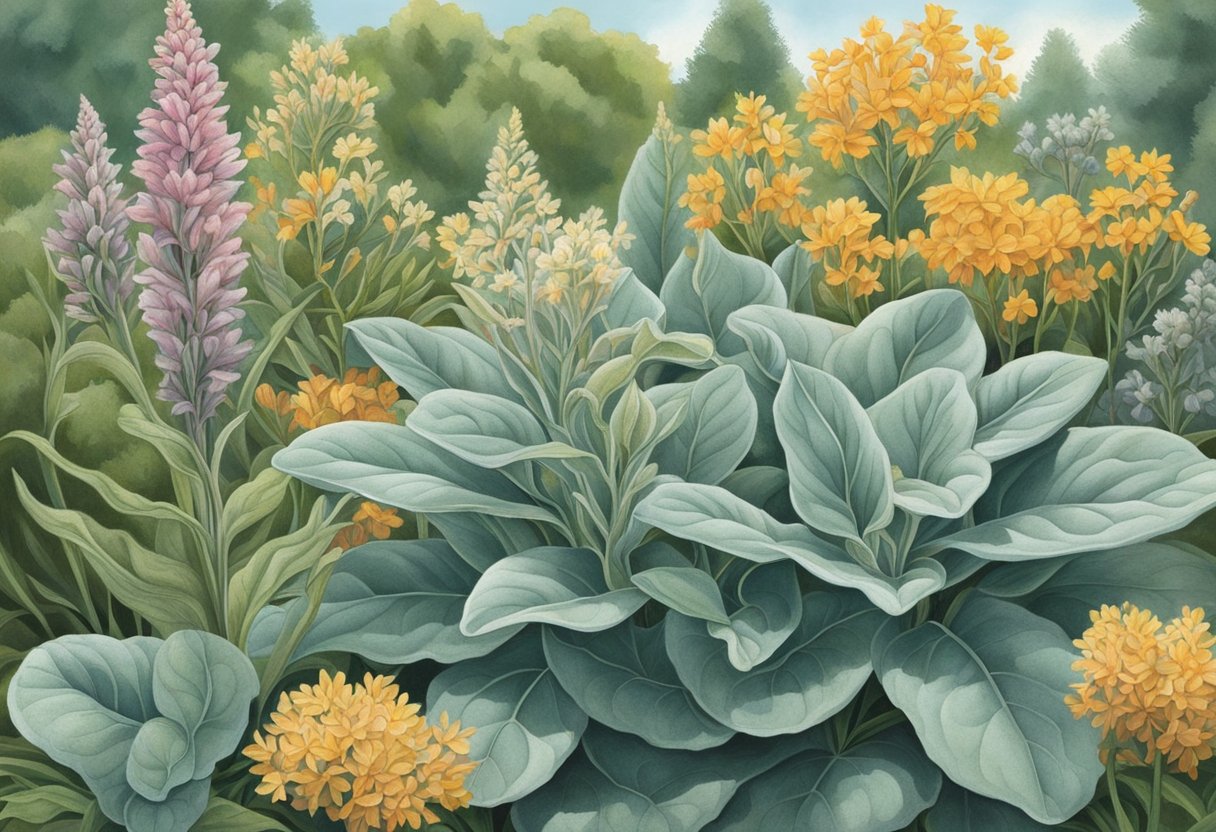
Ecological Significance
Stachys byzantina, commonly known as Lamb’s ear, is a popular ornamental plant due to its soft, velvety leaves and low maintenance requirements. It is a native of Turkey and Iran but has been introduced to many parts of the world, including North America, Europe, and Australia. In its native range, it is an important plant in the ecosystem, providing food and habitat for various insects and animals.
Invasiveness and Control
However, outside of its native range, Lamb’s ear can become invasive and aggressively spread, outcompeting native plants and disrupting the natural balance of the ecosystem. It is particularly problematic in areas with mild winters, as it can overwinter and quickly establish itself in the spring.
To control the spread of Lamb’s ear, it is important to prevent its introduction into new areas and to remove any existing plants before they can produce seeds. Mechanical removal, such as digging up the plant and its roots, is effective but can be labor-intensive. Herbicides can also be used, but care must be taken to avoid harming non-target species.
Overall, while Lamb’s ear has ecological significance in its native range, it can become a problem in areas where it is invasive. Proper management and control measures are necessary to prevent its negative impact on the environment.
Frequently Asked Questions
How do you propagate Stachys byzantina ‘Lamb’s Ear’?
Stachys byzantina ‘Lamb’s Ear’ can be propagated through division or stem cuttings. The best time to divide the plant is in the spring or fall. To do so, dig up the plant and separate the clumps of leaves and roots. Replant the divisions in well-draining soil and water thoroughly. Stem cuttings can be taken in the spring or summer. Simply cut a stem with several leaves and plant it in moist soil. Keep the soil consistently moist until the cutting has rooted.
What are the medicinal uses of Lamb’s Ear?
Lamb’s Ear has been used for centuries for its medicinal properties. It is known for its antibacterial and anti-inflammatory properties and has been used to treat wounds, burns, and insect bites. The leaves can also be used as a poultice to soothe skin irritations.
Can Stachys byzantina ‘Lamb’s Ear’ become invasive?
While Stachys byzantina ‘Lamb’s Ear’ is not considered invasive, it can spread quickly in the right conditions. To prevent it from taking over, it’s important to divide the plant regularly and to remove any seed heads before they can spread.
What is the best way to care for Lamb’s Ear plants?
Lamb’s Ear prefers well-draining soil and full sun to partial shade. It is drought-tolerant once established but will benefit from regular watering during dry spells. Deadhead the flowers to encourage more blooms and trim back any yellow or dead leaves to keep the plant looking neat.
Does Lamb’s Ear bloom, and what do the flowers look like?
Yes, Lamb’s Ear does bloom. The flowers are small and pink to purple in color, and they bloom on tall spikes that rise above the foliage. The flowers attract bees and butterflies to the garden.
Is Lamb’s Ear a perennial plant that returns each year?
Yes, Lamb’s Ear is a perennial plant that returns each year. With proper care, it can live for several years and will continue to spread and fill in garden beds over time.


